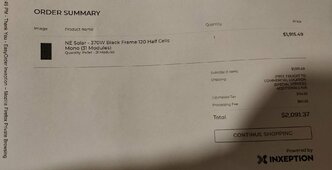Well, if the requirements are "cost to entirely run a home normally off the grid minus the heating."
The engineering approach would be to better define terms as well as the requirements.
Q1: What is the estimated total daily electrical loads?
This varies by square footage, insulation and weatherproofing, glass surfaces (single/double/triple paned windows), and regional climate demands which could effect lighting needs. You removed the heating burden - but what about cooling; Tucson is monstrously hot compared to Seattle. There are some basic excel worksheets on the interwebs which one could use to begin modelling their loads and seasons.
Q2: How do you interpret good system?
There are at least three tiers of technology vendors; cheap chinesium (IMHO LiTime, Renogy), better chinesium (EG4), and top line (likely includes vendors such as Victron, Schneider, Midnight, Outback). The top tier does cost 2-4 times the cheaper stuff, but one should expect a 10-15 year lifespan from these. Cheaper stuff maybe 3-10 year with luck. Here aspects of ruggedness, reliability and longevity come into play and are serious considerations.
Q3: What is the available solar energy for the site/location?
Answering this would need to adjust for latitude and longitude, local terrain (slopes facing south are obviously more-better in northern hemisphere), local trees and other structures causing shading (larger hills to the east or west may shorten the available hours). There are charts available on the interwebs which help to establish approximate solar hours based on the property's latitude/longitude. These can help determine how many hours the system could potentially capture solar energy. Here potentially will not take into account local weather patterns such as cloud cover or reflective snow.
Q4: Would this be a DIY solution with hands-on and a technical/mechanical home owner, or write the check and be done with it?
Goose gave starting ballpark figures, though I would recommend doubling the cost of a turn-key system (~$100-200k).




